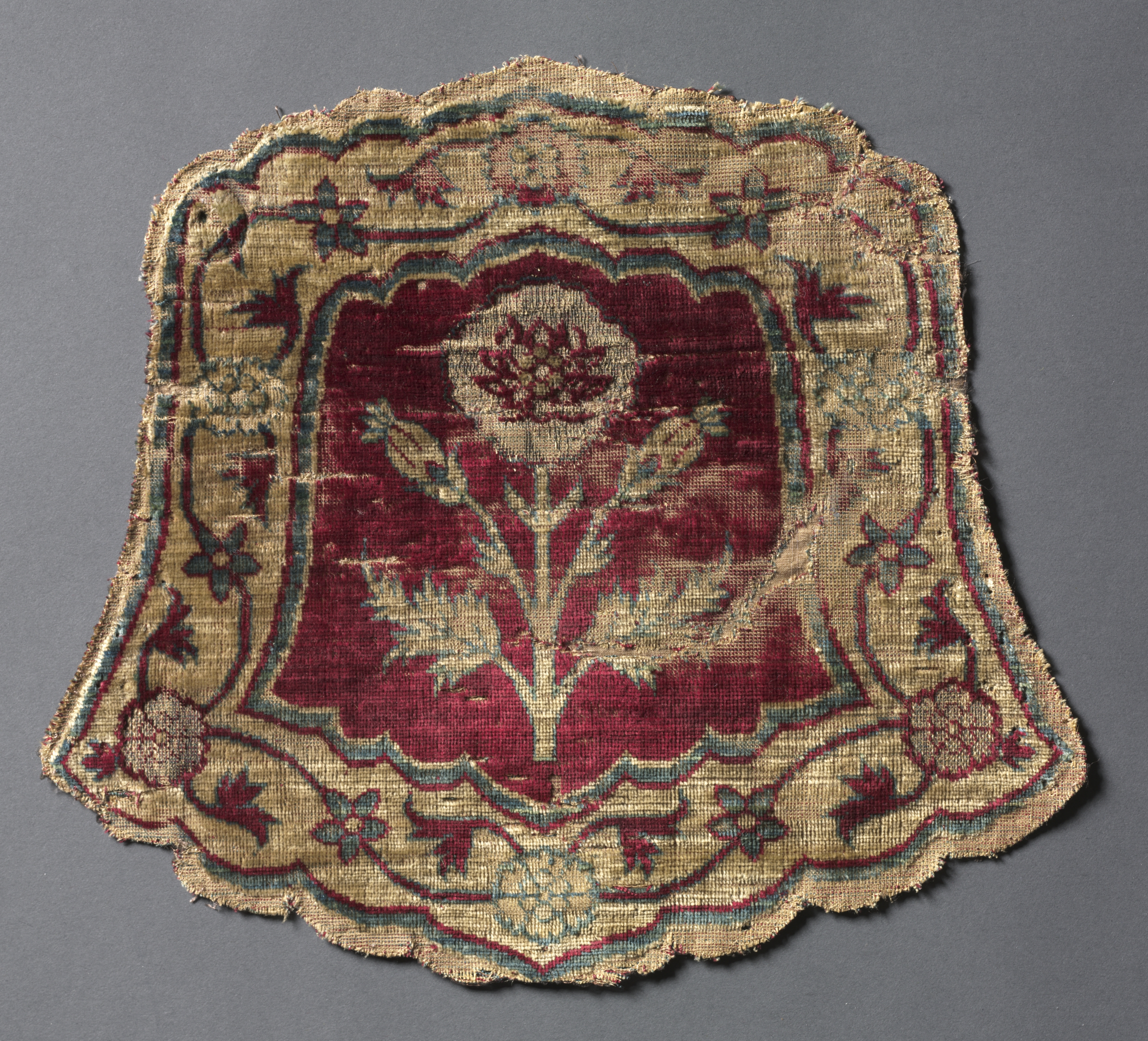The Cleveland Museum of Art
Collection Online as of April 26, 2024

Shaped horse trapping
1600s
Average: 26.1 x 23.5 cm (10 1/4 x 9 1/4 in.)
Purchase from the J. H. Wade Fund 1927.376
Location: not on view
Description
The scrolling floral vines in the border and the combination of gold with imperial crimson resonate with the painted depiction of the textiles that accompany portraits of the emperor. The poppy plant in the center can be identified by the leaves with multiple lacy points and may reference the opium in which Emperor Jahangir indulged daily.- Mackie, Louise W. Symbols of Power: Luxury Textiles from Islamic Lands, 7th-21st Century. Cleveland; New Haven: Cleveland Museum of Art; Yale University Press, 2015. Mentioned and reproduced: P. 421, fig. 10.12
- Art and Stories from Mughal India. The Cleveland Museum of Art, Cleveland, OH (organizer) (July 31-October 23, 2016).Needles, Dye-Pots, and Looms: Textile Traditions in India. The Cleveland Museum of Art, Cleveland, OH (organizer) (October 15, 1985-May 11, 1986).
- {{cite web|title=Shaped horse trapping|url=false|author=|year=1600s|access-date=26 April 2024|publisher=Cleveland Museum of Art}}
Source URL:
https://www.clevelandart.org/art/1927.376